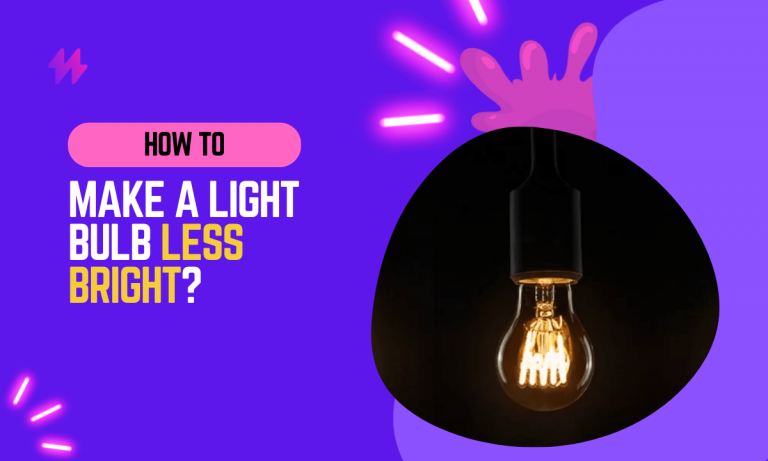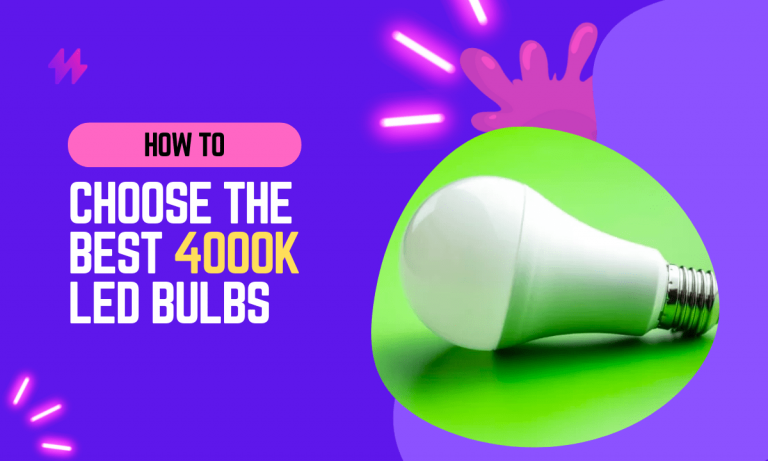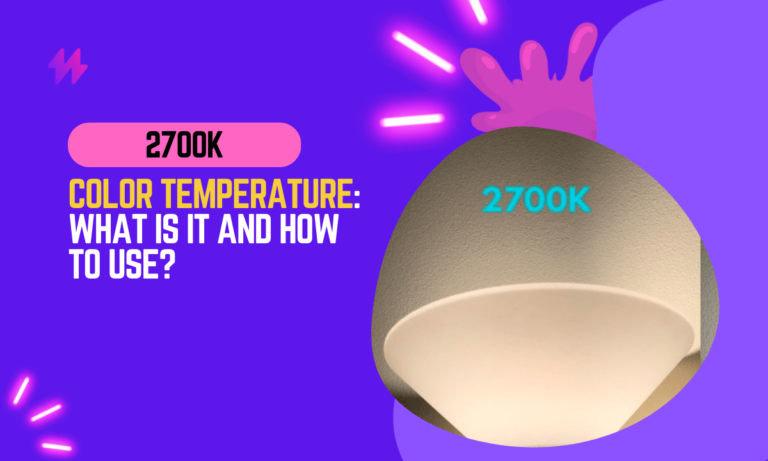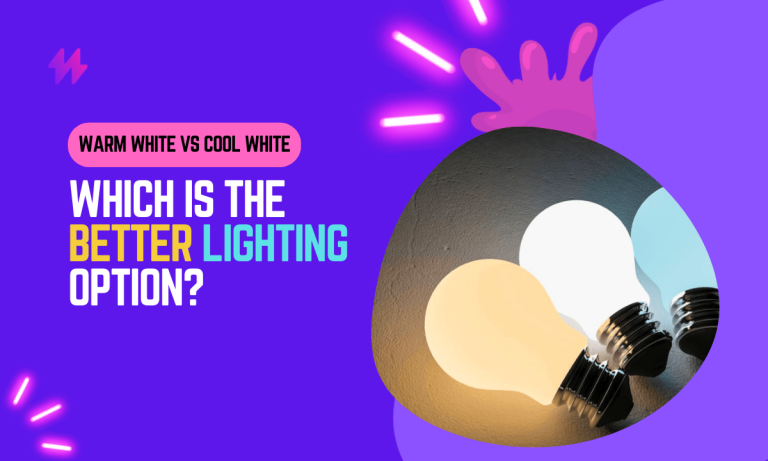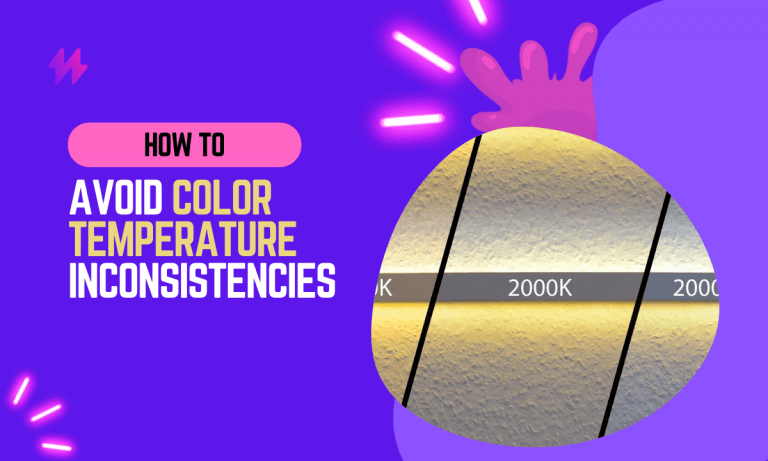How to Choose the Best Color Light for Kitchen in 2023?
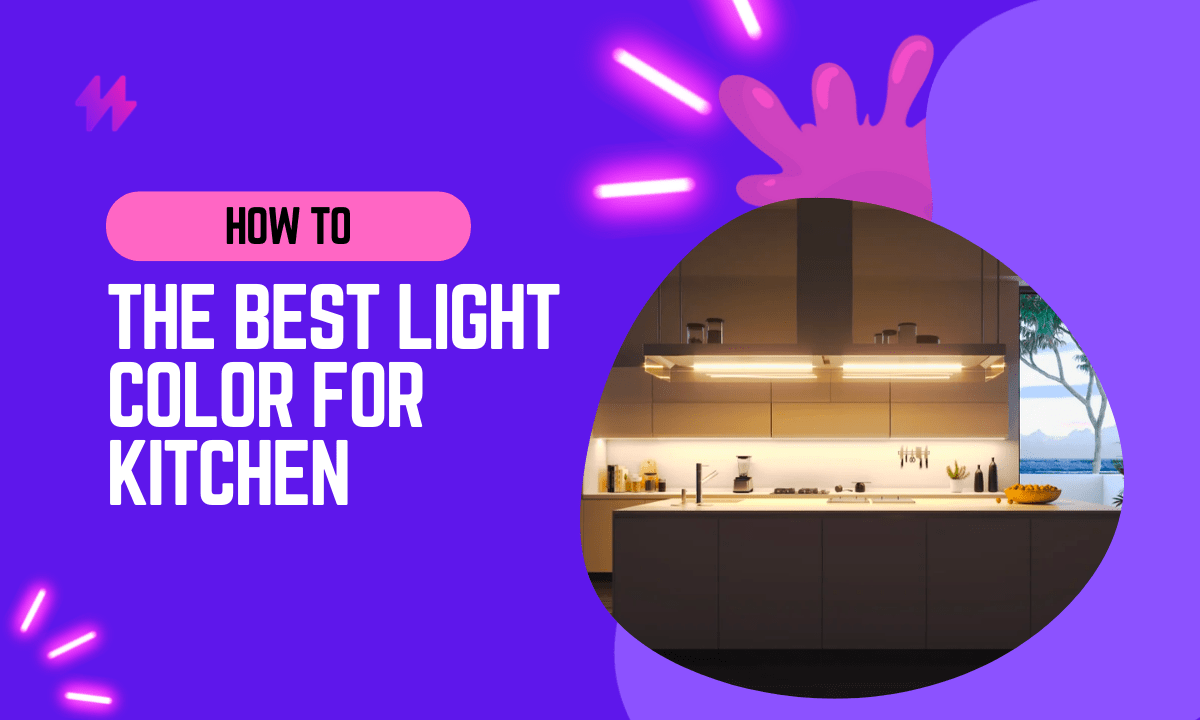
Kitchen lighting is one of the most important aspects of a kitchen. It can make or break the look and feel of your kitchen. Not only that, but it is also responsible for creating an atmosphere in which you can cook comfortably and safely. With so many different types of lights to choose from, it can be difficult to know which type is right for your kitchen. This article will discuss the different types of kitchen lights available, as well as their pros and cons.
Proper kitchen lighting ensures that your cooking space is both functional and aesthetically pleasing. Choosing the right color light and lighting fixtures can dramatically influence your kitchen’s overall ambiance, transforming it from a simple cooking area to an inviting gathering spot for family and friends. In modern kitchens, incorporating smart lighting and adjustable brightness options can enhance color perception, allowing you to perfectly illuminate countertops with various color temperatures.
How to Choose the Best Color Light for Kitchen in 2023: The Kelvin Scale and Available Color Temperatures
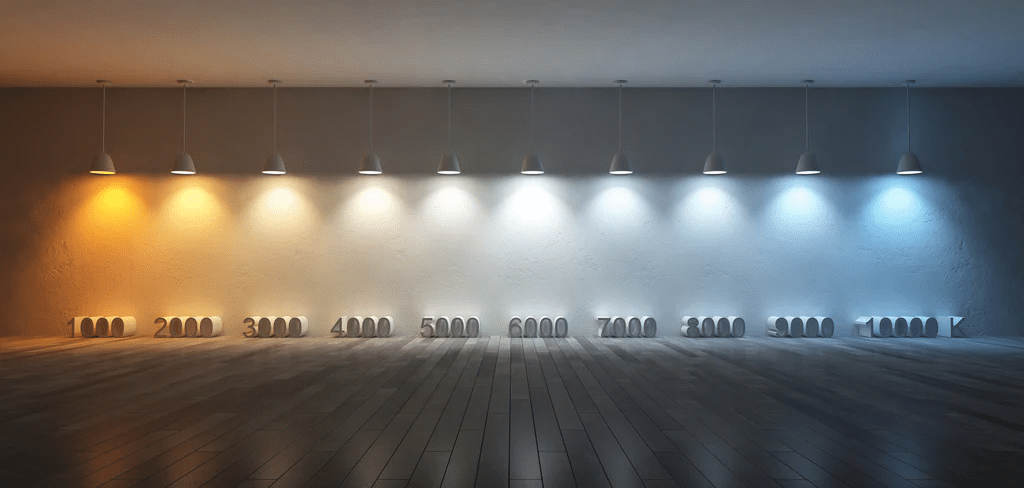
The Kelvin scale is a rating system that is used to measure the color temperature of light. This scale ranges from 1000K (warm) to 10,000K (cool). When choosing a light for your kitchen, it is important to consider the Kelvin scale rating.
To achieve the best ambiance in your kitchen, selecting the right kitchen lights is crucial, as they not only contribute to functionality but also to the aesthetics of your space. Incorporating dimmer switches and smart bulbs can enhance your kitchen’s versatility and allow for adjustments in lighting to suit different times of the day or varying kitchen activities.
White LED Color Temperature Moods: Exploring Kitchen Lighting Options
- Warm (2700K-3000K): A light with a warm color temperature will create a cozy and intimate atmosphere. This is the perfect type of light for a kitchen that is used primarily for entertaining or spending time with family.
- Natural (3500K-4000K): A light with a natural color temperature will create a bright and airy atmosphere. This is the perfect type of light for a kitchen that is used primarily for cooking or working.
- Cool (4000K – 5000K): A light with a cool color temperature will create a clean and modern atmosphere. This is the perfect type of light for a kitchen that is used primarily for entertaining or as an office space.
Three Essential Categories of Kitchen Lighting: Task, Accent, and Ambient
There are three main categories of kitchen lighting, which are as below:
To optimize functionality in your kitchen, consider the various categories of lighting solutions available, such as ambient, task, and accent lighting. Each lighting type significantly contributes to creating a well-lit kitchen that enhances its overall design and atmosphere, making it not just a cooking space but an inviting dining room as well.
Optimizing Kitchen Lighting: Understanding Task Lighting
Task lighting is designed to provide light for specific tasks in the kitchen. This type of lighting is usually located above the sink, stove, or countertops. It is important to make sure that task lighting is bright enough to allow you to see what you are doing, but not so bright that it causes glare.
Effective task lighting is essential to support culinary activities, ensuring visibility for stovetops and kitchen benches during meal preparation. By using adjustable color temperature options and installing stylish lighting solutions like recessed lights or pendant lamps, you can create a well-designed kitchen that is both functional and inviting.
Revamping Your Space with Accent Lighting: A Guide to Effective Kitchen Illumination
Accent lighting is used to create a certain atmosphere in the kitchen. It can be used to highlight certain features, such as a piece of art or a beautiful backsplash. Accent lighting is usually located in the corners of the room or underneath cabinets.
Accent lighting plays a critical role in enhancing the **interior design** of your kitchen while providing necessary visibility. By carefully selecting **light fixtures** and utilizing elements like **led strip lights** or **pendant lights**, you can accentuate the beauty of **light-colored cabinets** and create a warm, inviting atmosphere.
Ambient Lighting: Understanding Its Role in Kitchen Design
Ambient lighting is used to provide general illumination in the kitchen. It is important to make sure that ambient lighting is bright enough to allow you to see everything in the room, but not so bright that it causes glare.
Incorporating various types of **light sources** can create a **vibrant lighting** experience that enhances your kitchen’s **interior design**. By understanding **how to choose the best color light for kitchen in 2023**, you can select **light fixtures** that not only suit your **kitchen island** but also complement the entire room’s **overall color palette**.
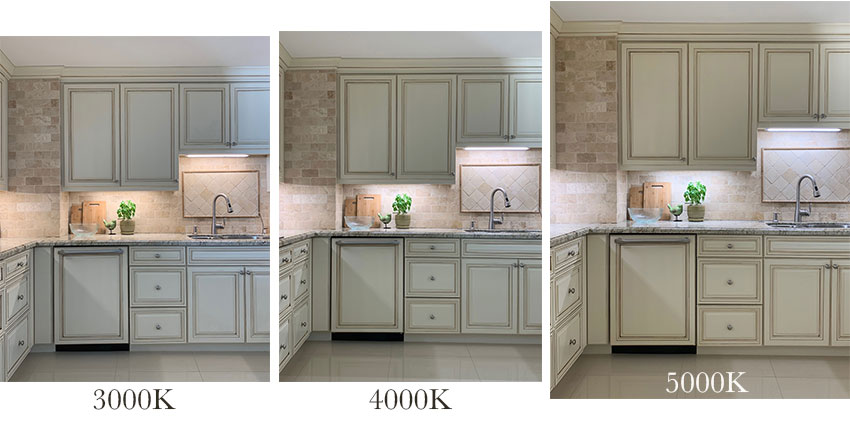
3000K to 4000K: Optimal Kitchen Lighting for Your Space
This range of color temperatures will provide enough light to see what you are doing, without causing glare. It will also create a warm and inviting atmosphere.
If you have wooden cabinets in your kitchen, it is important to make sure that the light is not too bright. This is because bright light can cause the wood to fade and change color. 3000K and 4000K lights are the perfect brightness for kitchen cabinets, as they will not cause any damage and will still provide enough light to see what you are doing.
Selecting the appropriate color temperature for your kitchen lighting is essential in creating an inviting kitchen atmosphere. The right light color can enhance the cabinet colors in your space, contributing to an overall cohesive and functional interior design style.
Optimal Color Temperatures for Kitchen Lighting: 4000K – 5000K
This range of color temperatures will also provide enough light to see what you are doing same as 3000K or 4000K, without causing glare but it will create a clean and modern atmosphere.
If you have stainless steel appliances in your kitchen, it is important to make sure that the light is not too bright. This is because bright light can cause the stainless steel to become fingerprinted and smudged. 4000K and 5000K lights are the perfect brightness for stainless steel, as they will not cause any damage and will still provide enough light to see what you are doing.
Creating a welcoming kitchen atmosphere involves balancing various **light sources** to ensure **proper lighting** throughout the space. By opting for **selectable light fixtures** that include **cool colors** and **warm colors**, you can adjust the ambiance according to your needs and preferences, enhancing the overall **interior design** of your kitchen.
Soft White vs. Daylight: Choosing the Best Color Light for Your Kitchen
Soft white light is perfect for kitchens that are used primarily for entertaining or spending time with family. It creates a cozy and intimate atmosphere and is the perfect type of light for wooden cabinets.
Daylight is perfect for kitchens that are used primarily for cooking or working. It creates a bright and airy atmosphere and is the perfect type of light for stainless steel appliances. It is also the perfect type of light for under-cabinet lighting, as it will not cause any damage and will still provide enough light to see what you are doing.
If you’re confused between choosing between soft white and daylight for the kitchen, go with daylight. This works best for traditional or transitional-style kitchens with earthy tones. Even, if you are not sure what type of light is best for your kitchen, you can install daylight bulbs, as they provide the perfect amount of light for any situation.
To create a stunning kitchen ambiance, selecting the right color temperature is key to maximizing quality lighting. It’s important to consider how different color temperatures, such as bright task lighting versus warm light, impact the kitchen’s overall feel and effectiveness, especially when hosting late-night kitchen trips or cozy family gatherings.
Essential Considerations for Choosing the Best Color Light for Kitchen
There are a few important factors that you need to consider while choosing the best color light for the kitchen. These are as follows:
When choosing the best color light for the kitchen, it’s essential to consider how different light sources and their temperatures can impact the ambiance and functionality. Selecting the ideal color temperature can significantly enhance how the kitchen feels and looks, especially when the entire kitchen composition includes features like dark cabinets or white cabinets.
Understanding the Size of Your Kitchen
The size of your kitchen is an important factor to consider when choosing the color light for the kitchen. If you have a small kitchen, it is important to make sure that the light is not too bright. This is because bright light can make a small space feel cramped and claustrophobic. 3000K and 4000K lights are the perfect brightness for small kitchens, as they will not cause any damage and will still provide enough light to see what you are doing.
If you have a large kitchen, it is important to make sure that the light is bright enough to allow you to see everything in the room. This is because a large space can feel dark and cavernous if the light is not bright enough. 4000K and 5000K lights are the perfect brightness for large kitchens, as they will provide enough light to see what you are doing without causing any damage.
Choosing the appropriate **light fixture styles** and color temperature is essential for achieving the right ambiance in your kitchen, whether it be a **rustic kitchen** or a modern-style kitchen. Additionally, employing **smart lighting technologies** can help you switch between **cool light color** and **warmer color** options to enhance the effectiveness and aesthetic of your cooking space.
Understanding the Types of Cabinets in Your Kitchen
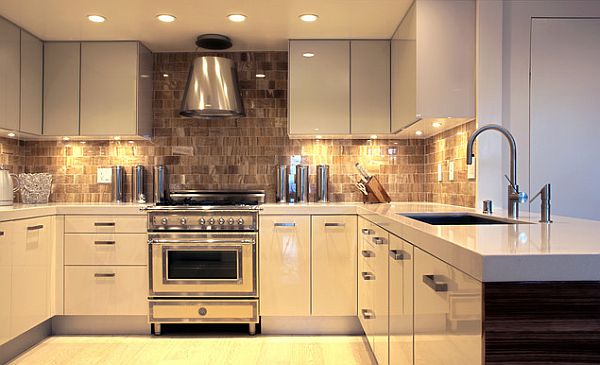
The type of cabinets in your kitchen is also an important factor to consider when choosing the color light for the kitchen. If you have wooden cabinets, it is important to make sure that the light is not too bright. This is because bright light can cause the wood to fade and change color. 3000K and 4000K lights are the perfect brightness for wooden cabinets, as they will not cause any damage and will still provide enough light to see what you are doing.
If you have stainless steel appliances in your kitchen, it is important to make sure that the light is not too bright. This is because bright light can cause the stainless steel to become fingerprinted and smudged. 4000K and 5000K lights are the perfect brightness for stainless steel, as they will not cause any damage and will still provide enough light to see what you are doing.
Selecting the right lighting is pivotal, especially when it comes to balancing aesthetics and functionality in both modern-style kitchens and rustic kitchens. Using led lighting or downlights not only enhances the ambiance but also ensures that all areas of the kitchen receive adequate illumination for optimal safety and performance.
Understanding Your Kitchen Lighting Needs: 3. Type of Kitchen
The type of kitchen you have is also an important factor to consider when choosing the best color light for kitchen. If you have a traditional or transitional-style kitchen, it is important to make sure that the light is not too bright. This is because bright light can make a traditional or transitional-style kitchen feel cold and sterile. 3000K and 4000K lights are the perfect brightness for traditional or transitional style kitchens, as they will not cause any damage and will still provide enough light to see what you are doing.
If you have a contemporary or modern-style kitchen, it is important to make sure that the light is bright enough to allow you to see everything in the room. This is because a contemporary or modern style kitchen can feel dark and cavernous if the light is not bright enough. 4000K and 5000K lights are the perfect brightness for contemporary or modern style kitchens, as they will provide enough light to see what you are doing without causing any damage.
In addition to color temperature, you should also consider the various **lightbulbs** available on the market, such as **led bulbs** and **incandescent bulbs**, each providing different levels of brightness and ambiance. To enhance a **rustic kitchen** or a **coastal kitchen**, choosing **pendant lighting** with warm dim tones can create a cozy atmosphere that complements the natural elements in these spaces.
4. **Evaluating the Amount of Natural Light in Your Kitchen**
The amount of natural light in your kitchen is also an important factor to consider when choosing the best color light for kitchen. If you have a lot of natural light in your kitchen, it is important to make sure that the light is not too bright. This is because bright light can make a space feel hot and uncomfortable. 3000K and 4000K lights are the perfect brightness for kitchens with a lot of natural light, as they will not cause any damage and will still provide enough light to see what you are doing.
If you have little or no natural light in your kitchen, it is important to make sure that the light is bright enough to allow you to see everything in the room. This is because a dark kitchen can feel oppressive and claustrophobic if the light is not bright enough. 4000K and 5000K lights are the perfect brightness for dark kitchens, as they will provide enough light to see what you are doing without causing any damage.
You may also like: How to choose Bathroom Color Temperature
To achieve proper lighting in your kitchen, it’s vital to understand how different types of light sources interact with various colors and finishes. Whether you’re opting for **led lights** or **incandescent lights**, the right **light bulb** can create the perfect color temperature to enhance both the functionality and aesthetic appeal of your space, making it a welcoming spot for family gatherings and culinary creativity.
Final Thoughts: Choosing the Best Color Light for Your Kitchen
In conclusion, choosing the best color light for a kitchen in 2023 involves balancing aesthetics with functionality, creating an inviting yet practical space. The kitchen, often referred to as the heart of the home, requires careful consideration in lighting to accommodate the myriad of activities that occur, from cooking and cleaning to dining and socializing. A primary consideration is the color temperature of the lighting. For task lighting, where clarity and visibility are paramount, a cooler temperature around 4000K to 5000K is recommended. This range provides a bright, neutral light that mimics daylight, enhancing visual acuity and aiding in food preparation tasks without altering the natural colors of food.
Conversely, for ambient lighting, which helps to create atmosphere and warmth, opting for softer, warmer lights around 2700K to 3000K can make the kitchen feel more welcoming and comfortable. This warmer light is flattering to skin tones and softens the appearance of the space, which is especially appealing during social gatherings in the evening. Additionally, incorporating adjustable lighting systems, such as dimmers or smart lights that change color temperatures, can provide versatility. Such systems allow the kitchen’s lighting to transition seamlessly from a functional workspace during the day to a cozy gathering area in the evening. By understanding these nuances and choosing lights that adapt to both the functional needs and the aesthetic qualities desired in a kitchen, homeowners can create a space that is not only efficient but also harmonious and inviting.
How To Choose The Best Color Light For Kitchen In 2023 | Evaluating the Amount of Natural Light in Your Kitchen
Understanding how to choose the best color light for the kitchen in 2023 involves evaluating the amount of natural light available in your space. Sunlight significantly influences how light bulbs emit light and can affect the perception of colors in your kitchen. Many kitchens benefit from layered lighting, combining ambient light sources and task lighting to create a functional and aesthetically pleasing environment. For kitchens with ample natural light, cooler light temperatures can enhance the clean finishes found in modern or industrial kitchens, while traditional kitchens may thrive under warmer, neutral lights that complement rustic elements. Selecting the right color temperature is essential; using bright illumination with specific color temperatures can mean brighter light that improves visibility while maintaining the charm of basic kitchen styles. Consider fixture choices such as recessed lighting set-ups or wall lights, and explore dimmable options to achieve the desired effect throughout the day as sunlight changes color.
How to Choose the Best Color Light for Kitchen in 2023 | Assessing Natural Light Sources
Assessing natural light sources in your kitchen plays a crucial role in how to choose the best color light for kitchen in 2023. Different kitchens experience varying levels of sunlight throughout the day due to window placements and ceiling heights. Understanding how sunlight works in your space can help you determine the appropriate artificial light to complement the natural light. For instance, if your kitchen has ample light coming from large windows, choosing white/neutral light bulbs can enhance the natural illumination. To create a functional lighting scheme, consider layering your lighting with several bulbs, including cool lights or halogen lamps, to achieve the right balance of brightness and color temperature.
Natural light sources significantly impact the selection of your kitchen’s lighting products, influencing the overall ambiance. A rustic kitchen resembles warmth and charm, often benefitting from traditional lighting fixtures like Edison bulbs, which provide a nice glow. If your kitchen tends to receive cooler tones during certain times of the day, using lighter-colored bulbs can help maintain brightness clarity and accurate color perception. On the other hand, cooler color temperatures may work to your advantage to highlight features and textures in your kitchen, especially in residential lighting applications. Understanding the nuances of how light tones blend together ensures you achieve not just sufficient light but an inviting atmosphere.
Impact of Natural Light on Color Selection
Assessing the natural light sources in your kitchen is essential for understanding how to choose the best color light for kitchen in 2023. The presence of large windows or skylights can introduce an abundance of daylight, which influences the overall atmosphere. Different times of day can affect how colors appear as sunlight changes throughout the day. A well-lit space can enhance real colors, making them appear more vibrant, while inadequate lighting may cause a color distortion, especially with white bulbs or cool lighting tones. Homeowners should consider these factors when selecting ceiling lights or general ambient lighting to ensure a proportionate lighting scheme.
Understanding color temperature is critical when making lighting decisions. Cooler lights tend to work better in kitchens with ample natural light, as they can mimic the fresh feel of sunlight. Knowing the difference between warm and cool color temperatures can help avoid the pitfalls of the wrong color temperature. Bright lights with high Kelvin ratings will create a crisp environment suitable for food preparation, while neutral color temperatures provide versatility. In traditional kitchens, layering lighting with a mix of general and task-specific bulbs can help achieve necessary brightness without overwhelming the space. By carefully selecting lighting from reputable lighting manufacturers, homeowners can create an inviting atmosphere that complements the kitchen’s design.


